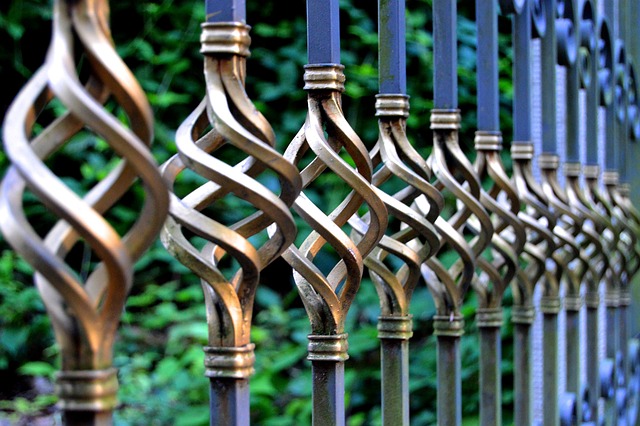All Categories
Featured

As sustainability comes to be a progressively important factor to consider for property owners, more people are turning to eco-friendly fence products. Whether you're constructing a fence for privacy, security, or aesthetic objectives, picking products that minimize environmental effect is an excellent means to add to a healthier earth. Below's an appearance at the leading environment-friendly secure fencing products offered today and their benefits.
- Bamboo Fencing: Eco-friendly and fast-growing. Bamboo is one of one of the most lasting secure fencing materials on the marketplace. Unlike conventional timber, bamboo is extremely fast-growing, which implies it can be harvested without diminishing forests. This makes it a very renewable energy, with some types growing up to three feet in a solitary day.
Ecological Advantages: Bamboo absorbs extra carbon dioxide than numerous other plants, assisting to counter greenhouse gases. Its fast development price suggests it can be collected regularly, making it a sustainable product. Resilience: Bamboo fences are naturally immune to bugs and degeneration, specifically when effectively treated, minimizing the demand for chemical treatments. Aesthetic Charm: Bamboo provides a distinct, natural appearance that complements both standard and contemporary landscape design styles. While bamboo is a great alternative, it's important to guarantee that the bamboo made use of is responsibly sourced to prevent adding to environmental destruction.
- Recycled Steel Secure Fencing: Resilient and Reusable. Recycled metal secure fencing, such as aluminum or steel, provides an eco-friendly alternative to traditional timber fencings. These steels are usually made from recycled products, decreasing the demand for brand-new mining and the environmental influence related to extracting resources.

Environmental Benefits: Metals like aluminum and steel are 100% recyclable, indicating they can be recycled and repurposed indefinitely without shedding top quality. Durability: Steel fences are exceptionally durable, resistant to weather, parasites, and use, making them a resilient selection that does not require to be changed often. Low Maintenance: Recycled metal fences call for very little maintenance and don't require to be painted or secured consistently, reducing the demand for additional chemicals. The primary drawback is that steel fences might not offer the very same privacy as wood or plastic alternatives, as they can have voids depending upon the style.
- Recycled Timber Fencing: All-natural and sustainable. For those who like the classic appearance of wood but desire a green choice, recycled timber secure fencing is an outstanding option. This material is made from recovered wood from old buildings, pallets, or perhaps furniture, diverting these products from land fills.
Environmental Advantages: Making use of recycled timber avoids the need to lower new trees, helping to save woodlands and lower deforestation. Aesthetic Allure: Recycled wood supplies a rustic, all-natural look and can be personalized to suit any home style. Sustainability: Since it is sourced from existing wood products, recycled timber doesn't require brand-new processing, which minimizes energy intake and carbon discharges. While recycled timber fencings are an eco-friendly alternative, they may call for even more maintenance over time than steel or bamboo fences, as timber can be vulnerable to decay and pests otherwise correctly dealt with.

- Living Fencings: Natural and Green. Living fences, which are made from thick plantings like hedges, trees, or shrubs, supply a environmentally friendly and entirely all-natural alternative to typical secure fencing materials. These fences not just offer personal privacy but additionally boost your garden with stunning greenery.
Ecological Benefits: Living fences can soak up co2, provide habitat for wild animals, and boost air quality. Noise Reduction: Dense plantings can act as all-natural , minimizing web traffic sound or various other unwanted noises. Visual Appeal: They add a soft, natural aesthetic to any kind of residential property and can be customized to fit any type of design. While living fencings are environmentally friendly, they do require normal maintenance such as pruning, watering, and in some cases pest control.
- Hemp Secure Fencing: Eco-friendly and Solid. Hemp is an additional lasting material that has made its method into the fence industry. Hemp fencings are made from strong hemp fibers that are woven with each other to create eco-friendly and long lasting panels.
Ecological Advantages: Hemp grows promptly and calls for very little water, making it a resource-efficient crop. The material is biodegradable and can be composted when no more required. Stamina and Resilience: Hemp secure fencing is remarkably strong and weather-resistant, making it ideal for several environments. Sustainability: Hemp farming needs less pesticides and fertilizers than typical plants, making it an ecologically accountable choice. However, hemp secure fencing might not be as widely available as other materials, relying on your area.
Conclusion: Lasting Choices for each Requirement. Picking green fencing products is a fantastic means to decrease your ecological impact while still attaining the privacy, safety and security, and aesthetic you want. From fast-growing bamboo to recycled timber and steel, there are a selection of sustainable alternatives that can help you create an attractive, useful fence while sustaining a healthier world. By thinking about aspects such as toughness, upkeep, and ecological impact, you can choose the very best green fence product for your demands and way of living.
Latest Posts
Uncover Premier Vehicle Maintenance Services in Chicago – Drive with Confidence
Published en
1 min read
Why Regular Vehicle Maintenance at Montclare Auto Repair Saves You Money
Published en
1 min read
Discover Save Big on Car Maintenance with Montclare Auto Repair’s Special Deals
Published en
1 min read
More
Latest Posts
Uncover Premier Vehicle Maintenance Services in Chicago – Drive with Confidence
Published May 29, 25
1 min read
Why Regular Vehicle Maintenance at Montclare Auto Repair Saves You Money
Published May 27, 25
1 min read
Discover Save Big on Car Maintenance with Montclare Auto Repair’s Special Deals
Published May 24, 25
1 min read